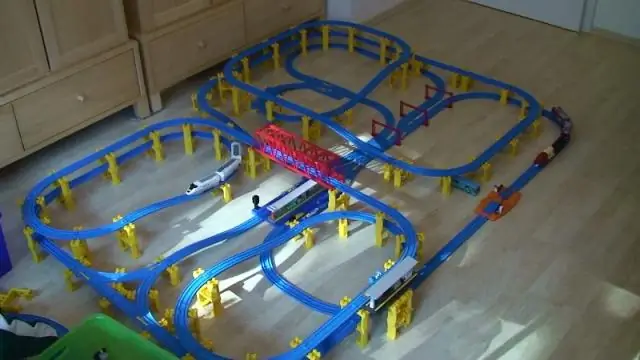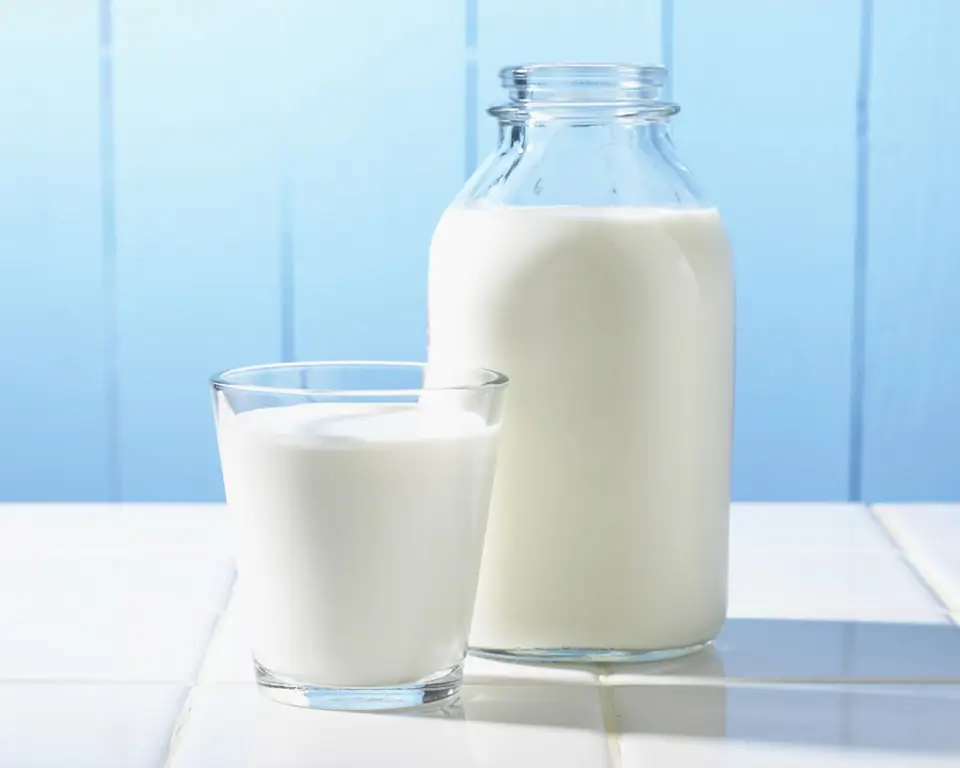
Table of contents:
- Author Bailey Albertson [email protected].
- Public 2023-12-17 12:53.
- Last modified 2025-06-01 07:32.
How to properly water violets at home

Indoor violet is a very popular plant, many of us are used to seeing it on our windowsills. It is believed that this flower is unpretentious to care for. But often we are faced with the fact that the violet begins to fade and eventually dies, although it is provided with the correct lighting and temperature regime. Why it happens? Perhaps we are watering this delicate and fragile flower incorrectly?
Content
- 1 The importance of proper watering at home
-
2 Ways to water indoor violets
- 2.1 Drip
- 2.2 Wick
- 2.3 Video about all the nuances of wick irrigation
- 2.4 Through the pallet
- 3 What should be water
-
4 In what mode to water
- 4.1 Winter and summer
- 4.2 Features of frequent watering
- 4.3 Secrets of abundant flowering
- 5 Elimination of disadvantages using potassium permanganate
- 6 Video about proper care for violets
The importance of proper watering at home
Water is essential for all living organisms, including plants. It is the most important building material for tissues and a supplier of nutrients needed by the plant body.
In addition, water helps maintain the microclimate around the plant. The moisture absorbed from the soil by the root system evaporates over time through the stomata on the leaves, creating a cool zone around the flower that protects it from high temperatures. Compared to the human body, this function is similar to the process of perspiration.
But water can be fatal to violets. This is due to the structure of the flower leaves. They are dense, fleshy and covered with fine fibers. They save the violet from overheating and hypothermia, but, unfortunately, make it very vulnerable to burns. Direct exposure to sunlight causes spots on the leaf surface, and water droplets increase the harmful effect several times. This is one of the main reasons for the death of violets.

Proper watering will keep the violet healthy and lush blooming
The temperature of the water with which you water the flower is equally important. Too cold or hot water will damage the root system to the point of death. The best option is room temperature. In addition, experienced flower growers recommend that the water for irrigating violets be left standing for at least 10-12 hours.
Do not forget about the level of soil moisture. The violet is said to tolerate dryness more easily than large amounts of water. It is not easy to achieve the optimal effect; it can take years of practice, trial and error. Therefore, we will try to give you the maximum of useful tips that will help you water the violet correctly so that it will delight you with bright flowering for a long time.
Watering methods for indoor violets
The main rule of watering violets at home: you cannot water from above. Avoid getting water on young leaves, growth point and flowers. Experienced flower growers use the three most common methods: drip, wick and pallet.
Drip
For drip irrigation, use a special watering can with a thin spout. Thanks to it, you can easily get to the soil in the pot without damaging the leaf rosette. If you don't have such a watering can, you can use a plastic bottle with a tube in the lid or a large syringe.

Use a thin-nosed watering can
The disadvantage of this method is that without proper experience, you can not calculate the correct amount of water. In addition, due to the nature of the soil, water may not reach the desired level, accumulating at the surface.

One way to drip a violet is through a small syringe. This will help to more accurately regulate the amount of water.
Wick
The essence of the method is as follows: one end of the cord or wick is passed into a drainage hole at the bottom of the pot, and the other is lowered into a container of water. A pot with a flower is installed on this container, and moisture, due to the capillary effect, rises through the wick inside the pot. You can use a strip of fabric as a wick.
The advantage of the wick method is that the violet root system itself takes water in the required amount, and the soil moisture is almost always kept at the same level. As the humidity and temperature of the environment change, the amount of liquid flowing through the wick will also change.

Wick irrigation of violets differs from the usual drip irrigation, but is often a better solution
Unfortunately, this method has serious disadvantages:
- If your violets are on the windowsill, the water can get very cold during the winter. Violets do not like it when "feet are cold", this can lead to the death of the roots.
- The pot should be small, no more than 7-8 cm in diameter. Otherwise, the soil moisture will be uneven, and the violet will begin to grow, not giving abundant flowering.
- The wick method is categorically unsuitable for some varieties of violets.
Video about all the nuances of wick irrigation
Through the pallet
You can use a bowl or other similar container as a pallet. It is necessary to pour in as much water as the substrate is able to absorb. Place the flower pot in a tray and fill it with liquid up to a quarter of the pot height. After a while, the soil will darken after absorbing water. This means that the required level of moisture has been reached.
The disadvantage of pallet irrigation is as follows: harmful salts are not washed out of the soil (as, for example, with drip irrigation), but rise, entering the upper soil layer and lingering in an earthen coma. Therefore, it is very important to control the quality of the water used to irrigate the violets.
What water should be
Previously, it was recommended to use melt and rain water for watering indoor flowers. Now, due to unfavorable ecology, these tips are irrelevant: such water will bring harm rather than benefit.
Another problem for violet lovers is the hard water from the city water supply, which is often chlorinated. All substances settle on the ground and the walls of the pot in the form of a white coating, which prevents the access of beneficial trace elements to the root system.

Tap water is not suitable for watering violets
When boiling water, most of the harmful salts decompose and form a precipitate, but this does not solve the problem. Boiled water needs additional acidification, for which you can use:
- acetic acid - 1 teaspoon per 1 liter of water;
- citric acid - 5 crystals per 1 liter of water.
This solution should be watered with violets no more than 1 time per month.
If your local tap water is soft, leave it in an open container for 2 days. During this time, the chlorine will evaporate from the liquid, and the lime will settle to the bottom. With such settled water, you can safely water violets.
In many settlements, the concentration of chlorine in tap water is increased in spring, therefore, in addition to settling, it requires filtration. Run water through filters that do not contain silver. The same applies to well and river water.
Keep the water at room temperature. This is important regardless of which watering method is chosen.
In what mode to water
Winter and summer
The process of photosynthesis in violets takes place in daylight. Therefore, it is recommended to water the flowers in the morning in spring and summer, and in the afternoon in autumn and winter (from November to April). This rule is not necessary if you provide artificial lighting for violets. Watering regularly at the same time is sufficient.

Water violets during daylight hours
Features of frequent watering
It is difficult to say unequivocally about the required frequency of watering flowers. There are many reasons for this factor:
- lighting intensity;
- indoor air temperature;
- changes in air humidity depending on the weather and season;
- the composition of the soil in the pot (loose soil dries faster than dense soil);
- flowering (during this period, the violet needs more moisture);
- the age of the violet;
- the level of development of the root system (a large number of roots dry out the soil faster);
- the dimensions of the pot and the material from which it is made.
The last point is also very important, no matter how strange it may seem. The clay walls of the pot let the evaporating moisture pass quickly enough. Plastic, on the contrary, holds it.
Secrets of abundant flowering
When growing young violets in a home environment, keep the soil moist at all times. For an adult flower, watering is sufficient as needed, when the topsoil has dried.
If you have many violets, and the same substrate is used for all of them, then by its color you can easily learn to determine the need for watering. Dark soil is well moistened, and the lighter it is, the more it needs watering.
Elimination of disadvantages using potassium permanganate
Today watering with potassium permanganate is not very popular, but this method brings good results.
Pros:
- good disease prevention and elimination of infections;
- additional feeding.
But be careful: too concentrated a solution can kill flowers. Correct dosage: for 1 liter of water, a few drops of potassium permanganate (or a few granules at the very tip of a knife).
Video about the proper care of violets
Violet is a real beauty that can delight you with lush flowering for a very long time, if you adhere to the rules of caring for it. Good luck and comfort to your home!
Recommended:
How To Clean And Cut Fish Correctly: Methods Of Fillet Processing, What To Do To Prevent Scales From Flying, How To Gut And Other Recommendations + Video

How to clean fish properly. How can you cut it. Processing methods for different varieties. Step by step instructions. Photo and video
How To Check The Quality And Naturalness Of Milk At Home: Checking With Iodine And Other Methods, Determining The Freshness + Photos And Videos

How to determine the freshness and quality of milk at home: several proven methods. Criteria for assessing the quality of milk powder
How To Check The Freshness Of Eggs At Home And In The Store (on Water And Other Methods) + Photos And Videos

How to check the freshness of eggs before buying by external signs and at home. What can be the result of negligence? What storage conditions should be provided?
How To Ignite A Cast Iron Pan Before The First Use And In Other Cases: Salt, Oil And Other Methods + Photos And Videos

How to ignite cast iron pans. Quick ways to get rid of engine oil residues, rust and carbon deposits
How To Defrost Meat At Home Quickly And Correctly In A Microwave, Hot Water, Oven And Other Methods + Photos And Videos

How to defrost meat at home. Methods in the microwave and without it, in hot or cold water, in the refrigerator and others. Pros and cons of methods
